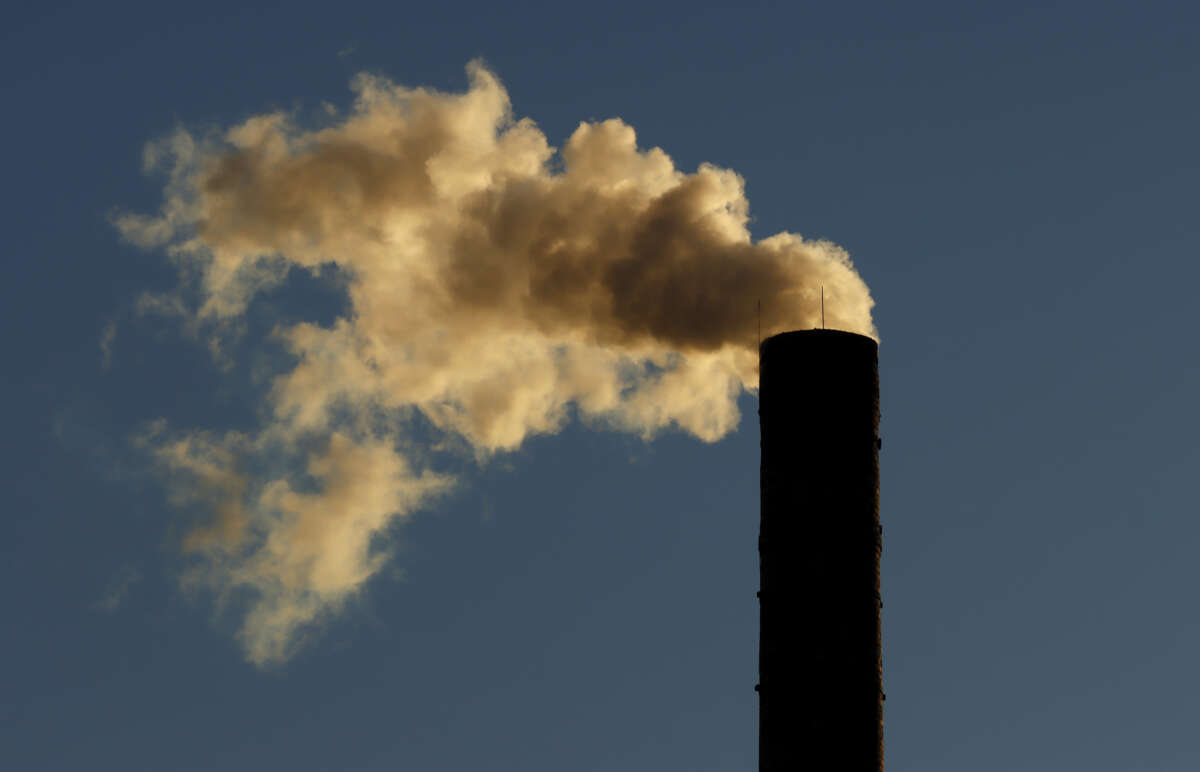A new report by the American Lung Association found that more than one in three Americans were exposed to unhealthy levels of air pollution between 2019 to 2021. Released on Wednesday, the 24th annual State of the Air report grades Americans’ exposure to two of the nation’s most pervasive air pollutants: ground-level ozone, an air pollutant that forms smog, and particle pollution, also known as soot.
The report found that while overall smog and soot pollution continues to decrease across the U.S., racial and geographic disparities are rising. As climate-fueled wildfires and drought increase and intensify, more people living in the West face potentially deadly particle and ozone pollution compared to their Eastern counterparts.
People of color were found to be 64 percent more likely than white people to breathe unhealthy air, compared to 61 percent in last year’s report. They are also 3.7 times more likely than white people to live in a county that received the American Lung Association’s lowest rating for all three pollution metrics that the group examined: ozone pollution, annual particle pollution, and short-term particle pollution. The report’s ratings were informed by national air quality standards set by the U.S. Environmental Protection Agency. Last year, people of color were 3.6 times more likely to live in a county that received a failing grade on all three measures.
Paul Billings, national senior vice president of public policy for the American Lung Association, said that those findings reflect the continued impact of systemic racism. Pollution sources ranging from refineries to highways are disproportionately sited in communities of color — a persistent legacy of racist housing policies such as redlining. “The benefits of clean air have not been equally shared, and in fact, we’re seeing in this report an even wider disparity than we saw last year,” he said.
Ozone causes what experts describe as a “sunburn of the lungs,” causing shortness of breath and wheezing and increasing the risk for asthma and respiratory infections. And particulate matter pollution bypasses the human body’s natural defenses to enter the deepest part of the lungs. Even short-term exposure to fine particles — those smaller than 2.5 microns across, also known as PM 2.5 — can lead to a host of health harms, including asthma attacks and heart attacks.
The number of people experiencing 24-hour spikes in particle pollution rose to the highest levels reported in the last decade. Close to 64 million people lived in counties with failing grades for those daily spikes, according to the report. “That’s nearly a half a million more than we saw in last year’s report,” said Billings.
One major contributor is more frequent and intense wildfires linked to climate change, which spew smoke and fine particles.
Billings said that when the American Lung Association started issuing its State of the Air reports 24 years ago, the organization noticed a much broader spread of communities across the U.S. experiencing high levels of pollution. Now, because of wildfires and increasingly hotter and drier weather, Western states are dominating the lists of top 25 cities most impacted by pollution.
California cities make up four out of the top five in the lists of cities most impacted by annual particle pollution and ozone pollution.
“We really see this marked shift, and a lot of that we think is due to climate change, not only for the wildfires but also the hot conditions that create the opportunity for ozone formation,” said Billings.
Ozone forms when nitrogen oxides and other pollutants “cook” in the sun through a series of chemical reactions. According to the EPA, ozone is more likely to form “on warm, sunny days when the air is stagnant.”
Those hotter days have become more frequent as a result of climate change, leading to “the number of unhealthy ozone days being higher than it would otherwise be,” the report says. “Simply, climate change is undercutting the progress we would have made.”
In response to these challenges, the American Lung Association and other public health groups are calling on the EPA to further limit ozone and particle pollution by significantly strengthening national ambient air quality standards under the federal Clean Air Act passed in 1970. The agency is currently reviewing both the particulate matter and ozone standards.
Billings said tightening those limits would fulfill the central promise of the Clean Air Act to provide everyone with clean, healthy air. “While we’ve made progress — no question about it — here we are more than 50 years later looking in the rearview mirror, and we still have more than 1 in 3 living in this country, living in a county that has unhealthy air,” Billings said. “No child born in 2023 should have to breathe air pollution that can make them sick.”
This article originally appeared in Grist at https://grist.org/health/pollution-smog-wildfires-1-in-3-americans-breathe-unhealthy-air-new-report-says-strong/.
Grist is a nonprofit, independent media organization dedicated to telling stories of climate solutions and a just future. Learn more at Grist.org
Matching Opportunity Extended: Please support Truthout today!
Our end-of-year fundraiser is over, but our donation matching opportunity has been extended! All donations to Truthout will be matched dollar for dollar for a limited time.
Your one-time gift today will be matched immediately. Your monthly donation will be matched for the whole first year, doubling your impact.
This matching gift comes at a critical time. As Trump attempts to silence dissenting voices and oppositional nonprofits, reader support is our best defense against the right-wing agenda.
Help Truthout confront Trump’s fascism in 2026, and have your donation matched now!
